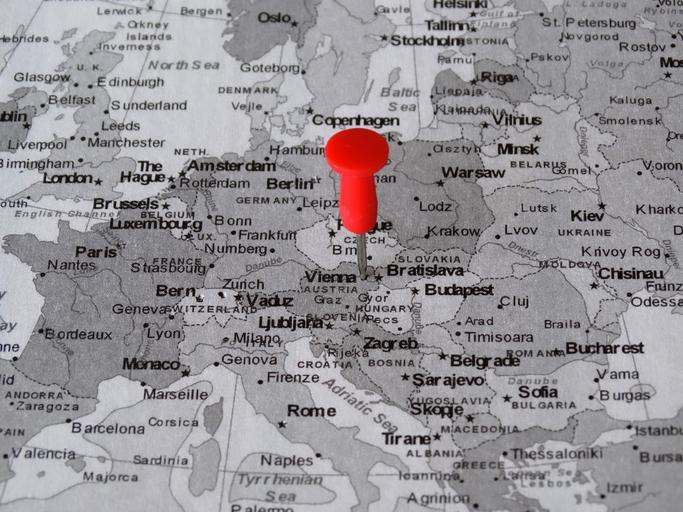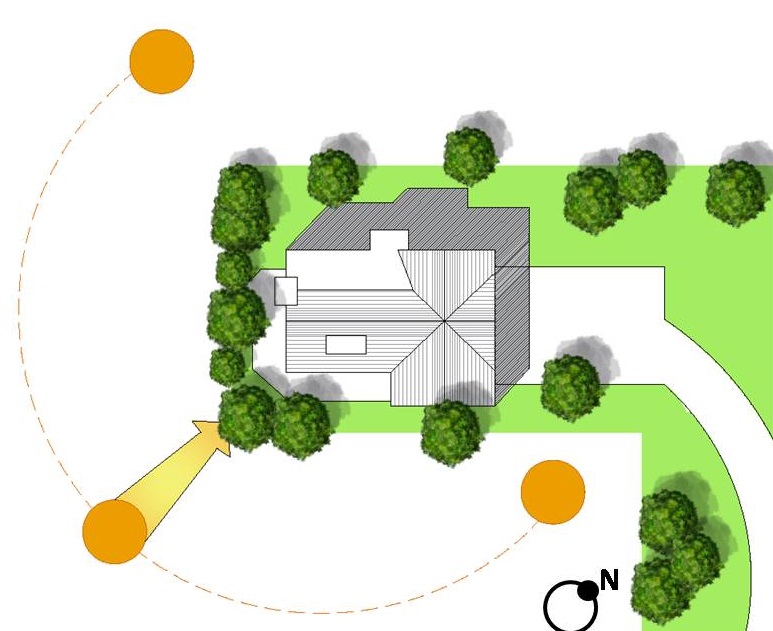Site Analysis or study of a site is the first essential step in an overall design and construction process. It is considered as a preliminary step of designing process that includes in its scope the study of geographic location, climate, topography and many more allied factors. A proper site analysis can let us understand the physical constraints of the site which can even help in formulating the complete designing intricacies in the concerned site in accordance to the proposed project. Thus, after the completion of a site visit, a detailed site analysis has to be executed to detect and comprehend the features of the site, which can help to create an all-inclusive and dynamic design output.
How to do Site Analysis?
Some of the points for site analysis mentioned in the book – Site Analysis – A Conceptual Approach to Sustainable Land Planning and Site Design by James A. LaGro Jr., which is a reliable source for consultation for the people working on site analysis. Concerned people involved in professional site analysis must pay attention toward the indicated points during the site visit as well as during the site analysis for organized approach on the said matter as suggested in the said book.
01. Site Location
One of the foremost points of a site analysis is detail deciphering the site location, and it is done to be completely aware about the context of the target site. So, collect the site location details that comprises of the address, the road on which it is located, major junctions, surroundings, major landmarks, etc. Along with all these details, have a look at the various options through which you can reach your site.

02. Site Dimensions
The other important factor to be taken in count is the geometric data of the site, i.e., its dimensions and area. This data will help the architects in defining the footprint of the spaces as per the program or your requirements. The geometry of the site also helps to decide the architectural size, shape, and form of the construction i.e. if it will be built in regular, semi-regular or irregular form.
03. Site Orientation
During the processing of a site analysis, a detail study of site orientation is very important. By combining the sun path and wind direction you will get some useful ideas regarding the best building design. The orientation of sun path will affect the building positioning and placement of the rooms and their interior spaces. It is basically the basic analytics that decide the size and location of the windows and doors for facilitating air, light and ventilation into the building

The plot orientation plays a major role to increase the energy efficiency of the building. To help you in knowing the importance of building orientation, we have shared a detailed blog with you:
04. Temperature Analysis
The average monthly temperature of the area round the year should be considered in the pattern of the design. In the warm climate, a design should be in such a way that it reduces the heat inside the building. In cold climate, the design should be in such a way that the sunlight on the building will impact maximum warmth inside the building. If we count in India, the country is divided into 5 climatic zones:
- Hot and dry
- Warm and humid
- Cold
- Moderate, and
- Temperate

High Performance Commercial Buildings in India – Adopting Low-Cost Alternative Passive Strategies for Energy Saving
05. Wind Direction Analysis
If someone wants to design a climate responsive building, it is important to consider wind and its flowing map through the interior spaces during various seasons. Generally, most of the site location will have some major direction from where the wind generally flows. But the wind direction does not remain consistent and predictable throughout the year as it varies from one place to another depending upon some local geographical factors.

Research Gate
06. Hydrology & Precipitation Analysis
The amount of annual rainfall that a site generally receives will give you an idea about the precipitation, which is expected throughout the year. It is also important to study the natural flow of water and existing storm water drainage including upper catchment contributory flow to the site.
During the site visit, a site analyzer also needs to identify water bodies like ponds, rivers, lakes, etc. and their location near the site. The size of the water body should be considered, because it may reduce the overall temperature of the area. Water table should also be considered while getting the site analysis done.
If your site is positioned near a water body, the water table may look shallow by its data interpretation. Shallow water table can affect the stability of the foundation and may create construction problems, particularly of foundations.
07. Site Topography
The topography of the site plays an important role in site analysis. The factor of topography depends on the slope of the land, i.e., whether it is a flat and plain, or an uneven surface. If a site shows a sloping surface, it becomes more challenging from the design point of view but it is always desirable to design a building along the contour of the plot. It helps in reducing the need of unnecessary cutting and filling with the soil to impose balance in the surface. The exact slope denomination of a sloping site can be obtained from the detailed contour map. Along with the slope, it is also important to check the stability of the slope. Furthermore, it is important to verify whether the slopes are strong enough to permit construction on it, and also the extent of the construction it can withstand.
For knowing more about importance of the site topography in a site analysis, please have a glance at our article named:
08. Condition and Types of Soil
Various types of soils are available to deal and analyze. Some of the common variations are sandy soil, clayey soil, laterite, marshy, rocky soil, etc. All these types of soils have different properties which affect the building, its foundation, and structural design. For example, the black cotton soil expands when it comes in the contact with water. Hence, it is important to be aware of various properties of soil to avoid the future problems that relates to the stability of the construction on a site. After knowing the type of soil, you need to calculate the safe load bearing capacity of the same and then only decide the structural system. Foundation will be designed accordingly.
09. Vegetation & Natural Features
The natural vegetation that grows on the site is always much relevant for the site analysis. Any competent designer should design in harmony with nature. The vegetations consist of the entire flora and fauna in the landscape. Along with the known kinds of vegetation presenting on site, its location, type of plants, their size, diameter or spread of the branches, the spread of leaves and the speed of growth as well as the spread of roots should also be taken in consideration. All these things should be recalled and noted down in the site map during the site analysis. Also, it is important to note here that all these features will vary from one species of tree to other and same about bushy plants available there. The local species will not grow easily but once grown these plants will survive better with lesser effort.
10. Manmade Features
Apart from all the natural features at site, it is very important to note the manmade features positioned at site during the site analysis. This manmade feature includes the details of adjoining buildings, fences, patios, shelters, plazas, etc. The existing historical features, if any, also should be documented if found located at the analyzed site.
11. Surrounding Land Uses & Buildings
If the land located around the site is unused or barren or incompatible to use, it may create an issue in the design. Also, the setbacks and heights of the adjacent buildings are very important because it will affect the flow of air and sunlight ultimately in the new construction.

12. Infrastructure Facilities and Services
Major things which need to be considered are the water supply, waste disposal and drainage, electricity supply, etc. These points are important while designing and planning for a new construction, which is done during the site analysis. The location and levels of manhole, fire hydrants and any other fixtures positioned on site should also be kept in account. Apart from these factors, the sizes of lines are also should be noted.
13. Locally Available Resources
Locally available materials around the site should be studied during the site analysis as it will create the bulk cost efficiency and carrying convenience. It will impact organic sustainability by reducing logistics cost and related energy facilities.
14. Views from Site
During the site analysis, you should note the views you get to accumulate from all directions. This all-rounder view can help you in designing your building with proper form, solid-void composition, an apt construction technique, etc. For example, if you want to obstruct the views outside your site, you can go for a heighted compound wall or avoid cut outs in the wall of that side. On the contrary, if you want to remain connected with the view, maximize the number of cut-outs in the target wall, etc.
Summing Up
Proper site analysis guides the designer to design the building by ensuring that the building will make the best uses of the resources available on the site like light, ventilation, views, etc. We hope this guide will help you in doing a site analysis in an appropriate, professional, and flawless way.
Apart from all these tips on a site analysis, if you are interested in knowing more about architectural designs, please have a glance at our most viewed articles.

